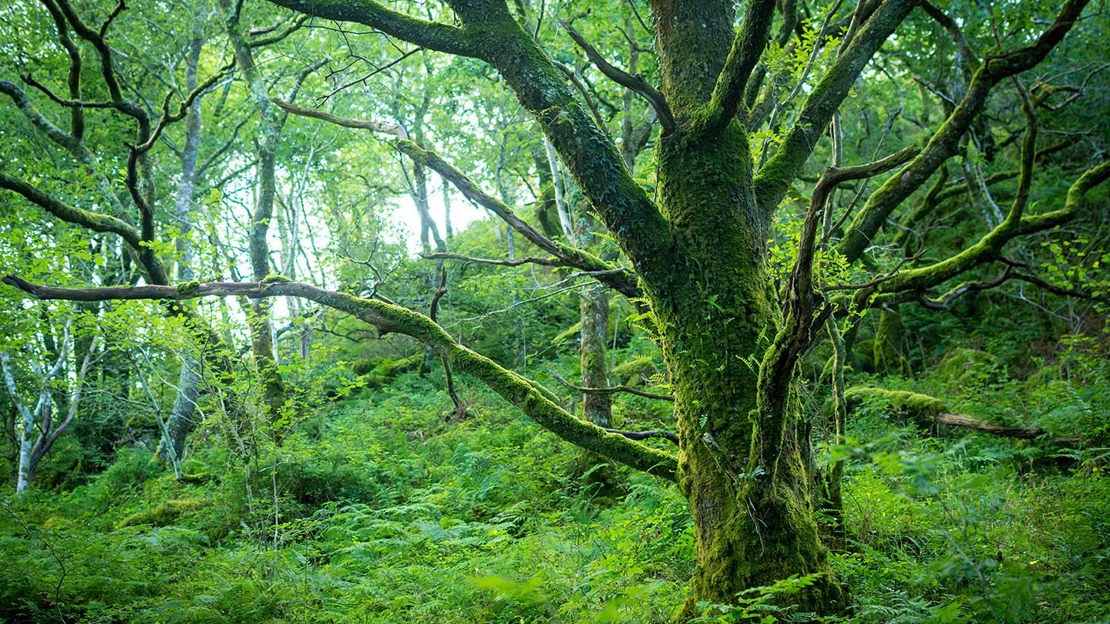English
New report reveals serious threat to Welsh woods and trees

Communications & Engagement Manager - Wales
Trees and woods are essential to the health and wellbeing of people in Wales, but a new report from the Woodland Trust provides evidence of multiple threats that pose catastrophic consequences for woods and trees across the UK.
The Woodland Trust’s State of Woods and Trees 2021 (SOWT) report launched today (14th April 2021) is the first of its kind to focus on native woods and trees. It shows that five major threats are compounding to result in negative impacts that could spell disaster for the UK’s wildlife, including plants, mammals, birds and insects.
The major threats include:
- poor woodland condition
- climate change
- fragmentation
- pests, diseases and pollution
- a slow rate of new woodland creation/expansion.

Key findings of the UK report include:
- Only 2.5% of UK land area is ancient woodland, and many ancient woods are now isolated. 50% of ancient woodland is damaged by commercial forestry or rhododendron invasion, and a large proportion of woodland SSSIs are in an 'unfavourable condition'. At least 1,225 ancient woodlands are currently under threat from destruction by new built developments.
- Only 7% of the UK’s native woodland is in good condition. A lack of dead wood, veteran trees and open space are causing declining habitat variety.
- Only 290,000ha of new woodland has been created over last 20 years. In the last five years, only 45% of new woodland comprised broadleaf, native trees.
- 19 new damaging tree pests and diseases have established in the UK since 1990; there were only four in the previous 40 years. For every £1 earned from importing plants, it costs £50 to manage the resultant pests and disease.
- Groups of indicator species for all UK woods are showing steep declines; on average, a 47% decline in woodland specialist birds, 41% decline in butterflies and an 18% decline in woodland flowering plants.
The most recent Natural Resources Wales SoNaRR Report highlights a similar picture, concluding that Wales is not yet meeting the four long-term aims of Sustainable Management of Natural Resources as outlined in The Environment Act (Wales). It is not maintaining stocks of natural resources, meaning that iconic species like curlews are predicted to become extinct in Wales within a couple of decades.
In Wales, the findings of both reports have been highlighted by Natalie Buttriss, director of Coed Cadw (the Woodland Trust in Wales).
She said:
“Though truly sobering to read, the evidence within these reports reinforces why planting and protecting woods and trees here in Wales is essential. The picture of decline in many species of plant, insect and animal may be a reflection of a UK-wide trend, but the evidence is strong enough to indicate that urgent action is needed here in Wales.
"Our manifesto details how and why future representatives must make this a priority to boost the green recovery that Wales urgently needs.”
Coed Cadw’s Manifesto for the 2021 Senedd election sets out how we can reverse the trend of decline in Wales and get trees and woodland to work for nature, people and the economy. It sets out proposals for politicians to easily support and be taken forward by the next Welsh Government.
Natalie continued:
“The findings of the 2021 UK SOWT report show that Coed Cadw’s proposed approaches – which include protecting the mature trees we already have, and the creation of a new ‘hedges and edges scheme’ supporting climate-smart, nature friendly farming – could have a real positive impact here in Wales, helping to protect many of the species that are currently under threat.”
Coed Cadw is urging the Welsh public to ask their candidates to support actions advocated in its manifesto.
Notes to editors
Examples of species in decline, as identified in the State of Woods and Trees 2021 report:
- The willow tit is the fastest declining woodland bird due to poor woodland condition, climate impacts and habitat fragmentation.
- The marsh tit has also experienced a 70% decline in numbers since 1970, as it depends on well-connected woods for breeding success.
- Similarly, woodland butterflies such as white admiral, pearl-bordered fritillaries and heath are all in steep decline.
About Coed Cadw, the Woodland Trust in Wales
The Woodland Trust (Coed Cadw) is the largest woodland conservation charity in the UK. It has over 500,000 supporters. It wants to see a UK rich in native woods and trees for people and wildlife. The Trust has three key aims:
- protect ancient woodland, which is rare, unique and irreplaceable,
- restoration of damaged ancient woodland, bringing precious pieces of our natural history back to life,
- plant native trees and woods with the aim of creating resilient landscapes for people and wildlife.
Established in 1972, the Woodland Trust now has over 1,000 sites in its care covering approximately 29,000 hectares. These include over 100 sites in Wales, with a total area of 2,897 hectares (7,155 acres).
Access to its woods is free, so everyone can benefit from woods and trees. The Trust’s Welsh language name, “Coed Cadw”, is an old Welsh term, used in medieval laws to describe protected or preserved woodland.

